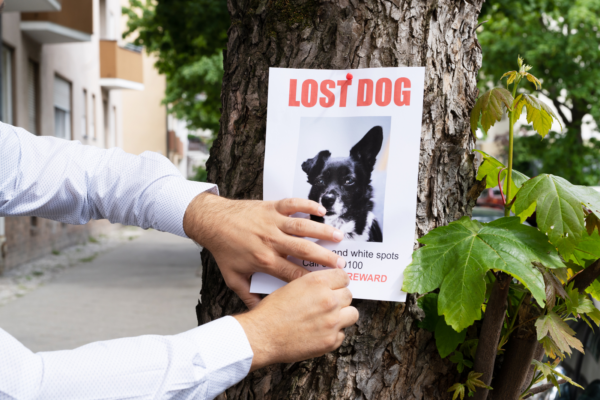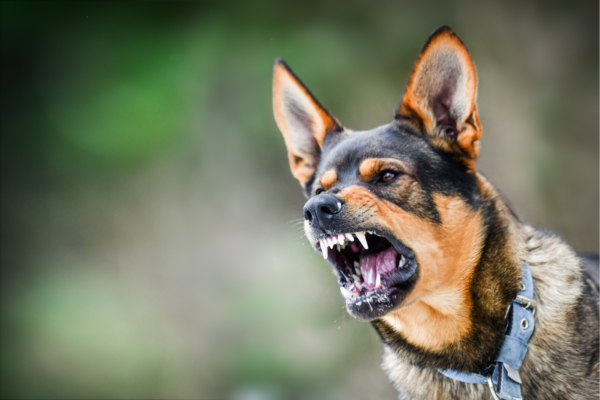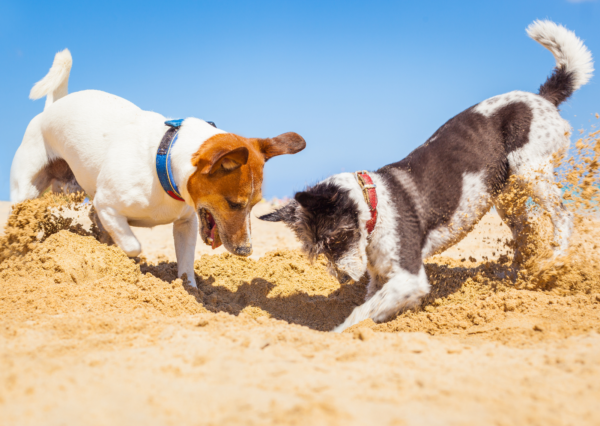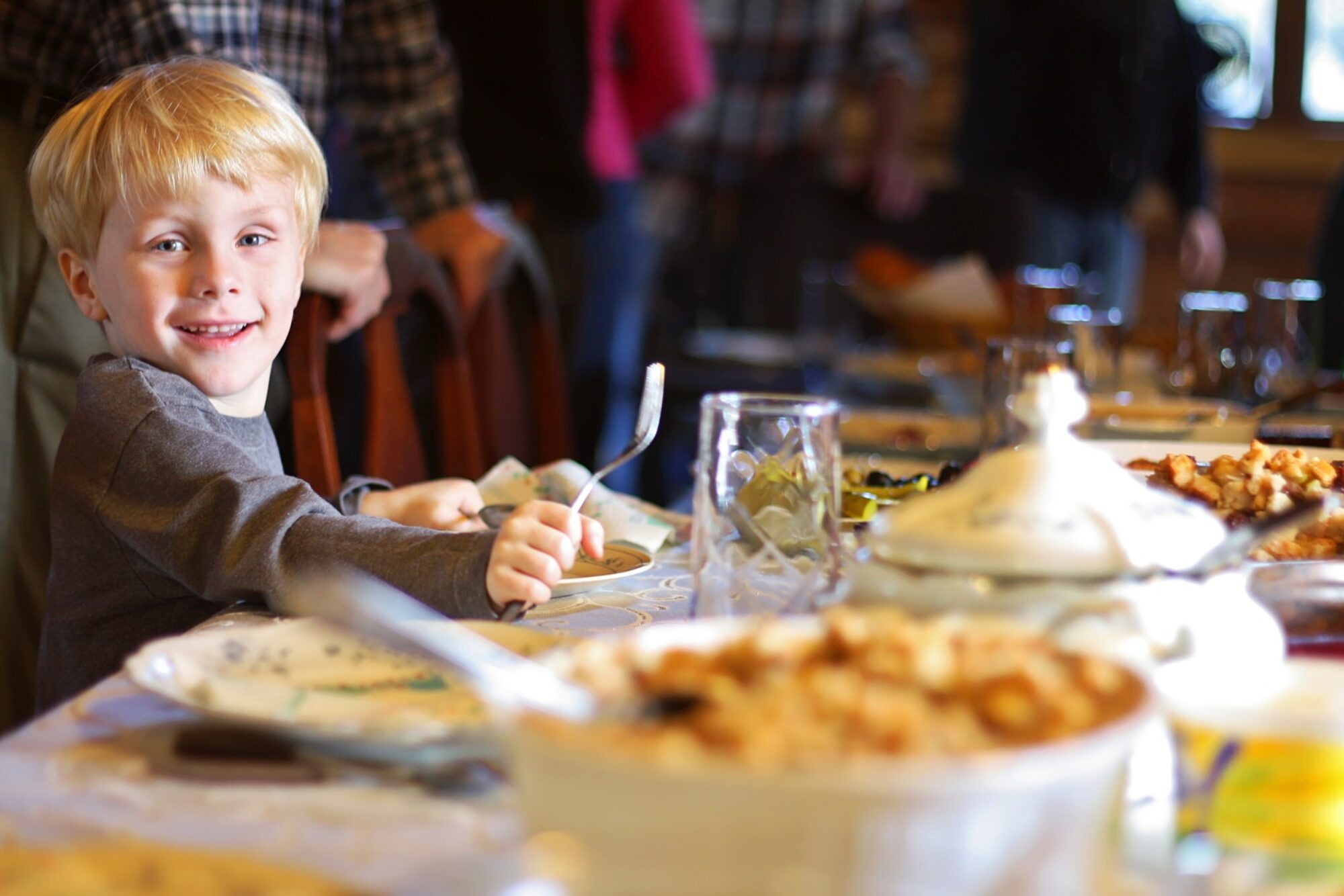Impulse control – mindset matters pt. 2 of 2
A helpful way to re-frame the debate around impulse control is to think of it less like an exercise in “generalized self-inhibition,” and more like teaching a child how to successfully navigate a fancy dinner party. In the presence of well-groomed adults, plates of cheese, and easily spilled glasses of wine, certain skills and level of decorum are required. But if any child of mine were too well-behaved to run off in the woods, collect bugs, build a fairy-fort, or get her pants muddy, that would honestly be more than a little sad. Exploring the woods requires a very different skill-set than going to a dinner party. However, both skill-sets are important. The dog that chases squirrels, gets into the trash, and tracks mud all over your rug is not any more or less “impulsive” than the one that lays politely on his bed instead of trying to steal food from your plate. Dogs are brave learners. They repeat behaviors that experience has taught him will pay off in each context. https://tromplo.com/course/control-is-an-illusion-rethinking-how-we-teach-for-impulse-control-6/
Where behavior is concerned, context matters absolutely
I’m not much of a control freak, but when it is in their best interests, I do work hard to teach my dogs targeted life-skills so they can be successful and reasonably civilized around exciting things. For example, when our labrador, Tucker, first came to live with us, he had developed a number of unsafe habits around toys. I wanted to use toys as reinforcers in our work together, but we could not even have them in the house he would get so worked up. It was a top priority to replace behaviors he had learned in his previous home with new ones, so we could both enjoy toy-play without all the stress, or me getting hurt. Tucker was the dog that taught me I needed to change my mindset about impulse control. Poorly applied extinction procedures, and harsh positive punishment had already pushed him to a very extreme place. He needed a radically different approach. Here is a video showing some of that process. He has come a long way; and for the record, not once in our four years together have I ever told him “leave it.” [youtube]https://youtu.be/rIY-hlMqktI[/youtube] In the event that I have not fully prepared my dogs for something, it is on me to manage things so they stay safe. I know exactly what situations they can be successful and comfortable in, and what situations they can’t. But the reality is, most days, my dogs blow me away with their profoundly unapologetic ability to be opportunistic. Deep down I am not so secretly proud of how safe they apparently feel to always give their best shot at getting as much as they possibly can out of life. Why would I ever want them to inhibit this? Brave reinforcement acquisition behaviors are precious.

Bottom line: suppression of behavior is just not my thing
It is just not where I want to put my time and energy with my dogs. Once I took negative punishment (removal of a reinforcer contingent on an undesirable response) and macro-extinction (letting a dog repeatedly and unsuccessfully try to get to something he wants in a context where he expects to get it), out of my everyday tool box (not necessarily the complete-set tool box I keep on the top shelf in my garage, just my everyday tool box that I bring to everyday training sessions), and I began to re-frame exercises such as “Doggie Zen,” “Leave it,” and “Distraction Proofing,” in terms of “stimulus control” rather “impulse control,” a whole new world opened up. Thinking in term of “stimulus control” places the onus on me to teach well, instead of on my learner to behave well. Teaching well means arranging the environment so that behaviors I want are easier for my dogs to get right. Teaching well means communicating criteria clearly. Above all, teaching well means being fair, generous, and trustworthy with reinforcement. Nothing is more sacred to me than learner confidence. I want my dogs coming to each session eager to offer more behavior, not less. I never want the presence of food or toys to trigger emotional conflict or confusion.“Can I have it? Or is it off limits this time? Sometimes food in your hand means yes. Sometimes no. Which is it today?” Instead, I want the smell of food, or presence of toys to act as cues for rapt attention, and eager anticipation.

“Leave it,” as traditionally taught, where you hold out food, but deny access to that food until the animal gives up, always seemed contrary to the traits I want to see more of in my learners. These days I deliberately create training scenarios that teach the exact opposite lesson in fact: I don’t want quitting. I don’t want giving up. I want my dogs to learn that behaving works. Persistence works. Keep trying. Be brave. You got this. It will pay off for you.
Thinking in terms of stimulus control means thinking like a clicker trainer
Instead of starting a session with trial and error, and elimination of errors via punishment, clicker trainers shape or capture a desired behavior first in as error-free a way as possible. We make behavior strong with high rates of reinforcement. We put the behavior on cue. Then, we work diligently to get stimulus control on that cue. We get stimulus control by clarifying exactly which stimulus in the environment is the most salient bit of information to pay attention to. Behaviors I used to teach via negative punishment and/or extinction, such as waiting for my dog to stop barking before throwing the ball, hoping he would develop better impulse control, I now teach fully with the ABCs in mind. I start by building a reinforcement history for alternative behaviors in easy contexts with minimal, to no conflict or confusion about how to get reinforcement. I call this phase “expanding the dog’s repertoires.” If waiting for reinforcement for even a few seconds is especially challenging, I’ll start with super dense, or even non-contingent reinforcement to begin with. Once the alternate behaviors are strong enough, next I carefully “fade in” (credit Kay Laurence) the more challenging antecedents gradually–either as irrelevant stimuli or by turning the problem distractions into cues for the new repertoire. No matter what I teach, however, my goal, always, is to arrange conditions so my dogs know and can trust that they are always working towards a “Yes,” never suppressing behavior to avoid even the mildest hint of “No.”
Think more objectively about the learning principles
My hope in initiating this discussion is not to vilify the concept of impulse control or the trainers out there who utilize it well. My goal, really, is to get people thinking more objectively about the learning principles that make or break our teaching choices. Above all, I want to inspire trainers to get more excited about stimulus control. Thinking in terms of stimulus control unlocks a thrilling kind of super-geek, ABA, X-ray vision. This ABA X-ray vision illuminates the exquisite relationship between environment and behavior that is going on all around us all the time. Honestly, people, this stuff goes so far beyond getting your dog to not eat the sandwich you left on the table, it will knock your socks off! The farther down the rabbit hole you go, the more mind blowing a journey it is. Understanding stimulus control is about learning to see the nitty gritty of how behavior really works. Stimulus control occurs when environmental stimuli become salient to the learner and have an effect on behavior such that the probability of that behavior happening is increased in the presence of that stimulus, and decreased in its absence. What are you doing right now? Very likely, you are sitting in a chair and looking at a computer screen. The chair is the stimulus “controlling” the behavior of sitting, and the words in front of your eyes are controlling your reading, or language processing behavior. If the chair was not there, you’d very likely be standing, not sitting. If the computer were not there, you’d be doing something else too. With the important exception of clinically diagnosed impulsivity problems, most of the behaviors we want our dogs to stop doing are usually perfectly normal for them to do. The important eye-opener here is that all behavior—even the really gross and annoying stuff — is already under perfect stimulus control! Smell the goose poop—roll in it. See the ball—bark. See food in your hand—try to eat it. If we want different responses than the ones our dogs have already learned to poop and balls and squirrels and food, that’s fine. The good news is they are already experts at learning. They’ve been doing it all their lives. There’s really no need to change anything that may or may not be going on in their beautiful minds; and there is certainly no need to even attempt to alter their minds via training set-ups that deliberately frustrate them. Let’s be clicker trainers about this. For real. Let’s focus on teaching our dogs to trust that when we are around, and reinforcement is available, their behaviors will work. Lets reframe our teaching strategies in terms of stimulus control so we get full access to the ABA tools we need to achieve a truly exhilarating level of communication and connection with the learners in our care…And, let’s start the ball rolling by putting the onus of behavior back where it belongs: on our skills and awareness as teachers, not on our dogs. (Check part 1 of “Impulse control – mindset matters *CLICK*)
[CLICK HERE FOR MORE IMPULSE CONTROL KNOWLEDGE]
See also other posts:
June 30, 2023

Get Your Lost Dog Back Home Quickly: Follow These 12 Tips for Success
Vacations favor more frequent and longer walks with our furry friends. We travel, visit new places. Summer makes us loosen our brakes and allow our…
June 30, 2023

Managing Aggressive Dog Behavior: Tips for Peaceful Living
Living with an aggressive dog may seem challenging, but it can be peaceful and manageable with the right approach. One key aspect is to remain…
June 30, 2023

Unlocking the Secret to Successful Puppy Socialization: Quality over Quantity
Today, although the topic is very important, I will keep it brief. Socialization is a topic that could fill books or scientific papers. However, today…

